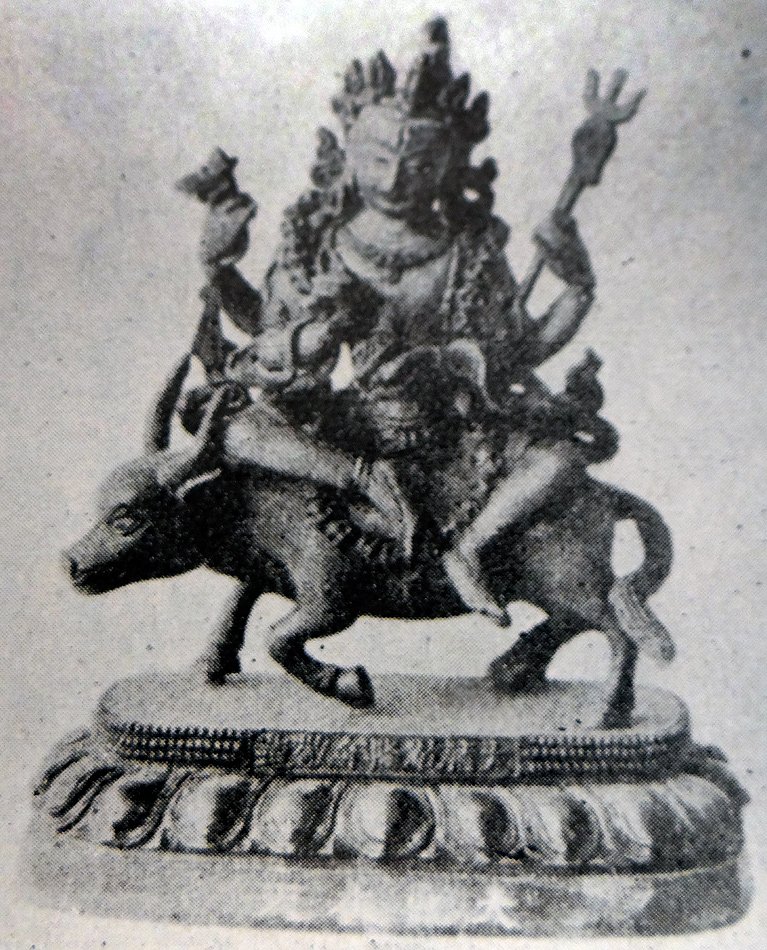The Indian Buddhist Iconography
by Benoytosh Bhattachacharyya | 1958 | 51,392 words | ISBN-10: 8173053138 | ISBN-13: 9788173053139
This page contains an iconography image of Ten principal Hindu deities: Maheshvara and represents figure 240 of the book Indian Buddhist Iconography, based on extracts of the Sadhanamala English translation. These plates and illustrations represent either photographs of sculptures or line-drawing reproductions of paintings or other representations of Buddhist artwork.
Figure 240 - Ten principal Hindu deities: Maheśvara

Fig. 240: Maheśvara
(Peiping)
In the Brahmā group there are ten deities [viz., Maheśvara]. They are popular in India and their statuettes occur in the Chinese collection. Their appearance in the Buddhist pantheon is almost the same as we find them described in the Purāṇas and Tantric works of the Hindus. The gods of the Brahma group are described with typical examples in the same order as they appear in the Dharmadhātuvāgīśvara-maṇḍala of the Niṣpannayogāvalī.
Maheśvara:
Colour: white;
Arms: four;
Vehicle: bull;
The third in this series of ten principal gods of the Hindus is Maheśvara. His form is described thus: “Maheśvara sits on the Bull, and is white in colour. His crown of matted hair is beautified by the moon. He is four-armed. With the two principal hands he displays the Añjali over the head, and with the two others he carries the Triśūla and the Kapāla”.
One statuette of Maheśvara occurs in the Chinese collection. It is illustrated in Fig. 240.
